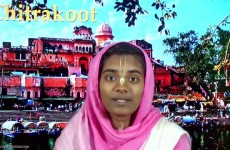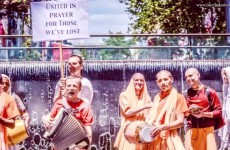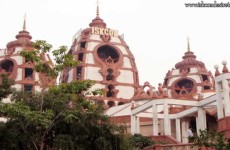Padi Kavali Maha Dwara
The Padi Kavali Maha Dwara or Outer Gopuram stands on a quadrangular base.
Its architecture is that of the later Chola period. The inscriptions on the gopuram belong to 13th century. There are a number of stucco figures of Vaishnava gods like Hanuman, Kevale Narasimha andLakshmi Narasimha on the gopuram.
tirupati Balaji Main Temple_1
Sampangi Pradakshinam
The path for circumambulating the temple is called a pradakshinam. The main temple has three prakarams. Between the outermost and middle prakarams is the second pathway for circumambulation known as the Sampangi Pradakshinam. Currently, this pathway is closed to pilgrims.
The Sampangi Pradakshinam contains several interesting mandapams like the Pratima Mandapam, Ranga Mandapam, Tirumala Raya Mandapam, Saluva Narasimha Mandapam, Aina Mahal and Dhvajasthambha Mandapam. Krishna Deva Raya Mandapam
After passing through the Padi Kavali Maha Dvara, you will find yourself in an open mandapam called the Krishna Deva Raya Mandapam or Pratima Mandapam. This mandapam gets its name from the pratimas or bronze portrait icons of the Vijayanagara emperor Krishnadevaraya and his two consorts, Tirumaladevi to his left, and Chinnadevi to his right. All three icons face the main shrine, with their hands joined in supplication.
In the southern wing of the Mandapam, is a statue of Venkatapathi Raya of the Aravidu dynasty, who ruled over Chandragiri around 1570 AD. To its side are stone statues of Achyutha Raya, who succeeded Krishna Deva Raya to the throne, and his wife Varadajiamma.
This Mandapam is believed to be built in later Vijayanagara times (early half of the 16th century). This Mandapam is full of exquisitely beautiful pictures of the Vijayanagara period like, Rama breaking the bow, Rama Pattabhishekam and Krishna Leela.
Sri Vaishnava symbols or the Urdhvapundras flanked by a conch and disc are carved at the top of the two main pillars of the Mandapam.
Ranga Mandapam,
also called the Ranganayakula Mandapam, is located in the south-eastern corner of the Sampangi Pradakshinam. The shrine within it is believed to be the place where the utsava murti of Lord Ranganadha of Srirangam was kept during the 14th century, when Srirangam was occupied by Muslim rulers.
It is said to have been constructed between 1320 and 1360 AD by the Yadava ruler Sri Ranganadha Yadava Raya. It is constructed according to the Vijayanagara style of architecture.
Tirumala Raya Mandapam
Adjoining the Ranga Mandapam on the western side, and facing the Dhvajasthambha Mandapam is a spacious complex of pavilions known as the Tirumala Raya Mandapam or Anna Unjal Mandapam.
It consists of two different levels, the front at a lower level and the rear at a higher. The southern or inner portion of
this Mandapam was constructed by Saluva Narasimha in 1473 AD to celebrate a festival for Sri Venkateswara called Anna Unjal Tirunal. This structure was extended to its present size by Araviti Bukkaraya Ramaraja, Sriranga Raja and Tirumala Raja.
It is in this Mandapam, that the utsava murthi Malayappan, holds His annual darbar or Asthanam during the hoisting of the Garudadhwaja on Dhwajastambham to mark the commencement of Brahmotsavam. Incidentally, the prasadam distributed on this occasion is still called Tirumalarayan Pongal.
The Mandapam has a typical complex of pillars in the Vijayanagara style, with a central pillar surrounded by smaller pillars, some of which emit musical notes when struck with a stone. The main pillars have rearing horses with warriors mounted on them. Some of the best sculptures of the temple are found in bold relief in the Mandapam. The bronze statues of Todermallu, his mother Matha Mohana Devi and wife Pitha Bibi, are kept in a corner of the Mandapam.
To know more visit – holydham.com/tirupati

















































































